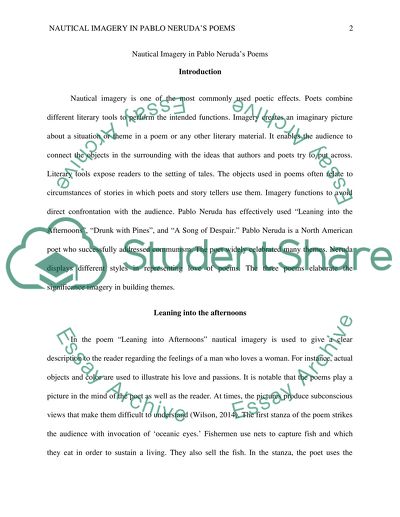Cite this document
(“Nautical Imagery in Pablo Nerudas Poems Essay Example | Topics and Well Written Essays - 1750 words”, n.d.)
Retrieved from https://studentshare.org/literature/1668798-nautical-imagery-in-pablo-nerudas-poems
Retrieved from https://studentshare.org/literature/1668798-nautical-imagery-in-pablo-nerudas-poems
(Nautical Imagery in Pablo Nerudas Poems Essay Example | Topics and Well Written Essays - 1750 Words)
https://studentshare.org/literature/1668798-nautical-imagery-in-pablo-nerudas-poems.
https://studentshare.org/literature/1668798-nautical-imagery-in-pablo-nerudas-poems.
“Nautical Imagery in Pablo Nerudas Poems Essay Example | Topics and Well Written Essays - 1750 Words”, n.d. https://studentshare.org/literature/1668798-nautical-imagery-in-pablo-nerudas-poems.


